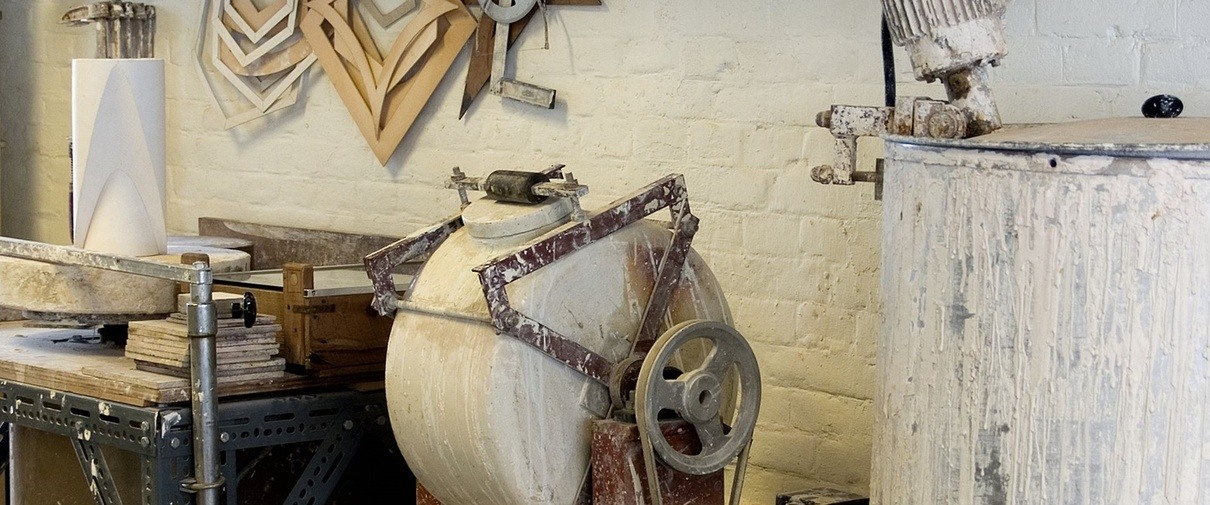Jan van der Vaart atelier
Jan van der Vaart, one of the Netherlands’ leading ceramicists, passed away in November 2000. He was a pioneer, an innovator and an influential teacher, but above all a gifted designer and creator of functional and autonomous ceramics. His work is immediately recognisable. Anyone who has to describe it uses terms like ‘sleek’, ‘geometric’, ‘architectural’. Among his best-known designs are the impressive tulip towers, a specific type of tulip vase that can be constructed from separate elements and be more than a metre tall.
Van der Vaart’s oeuvre consists partly of unica, one-off pieces turned or shaped by hand, and partly of multiples, objects cast in small editions. He started making these multiples in 1967, primarily motivated by the desire to make his work affordable for a wider audience. Ideally, he wanted the ceramic industry to export his vases, and for a short time it did: Tichelaar in Makkum did so for a few years in the late 1970s, as did Rosenthal in Germany in the 1980s. But most of the pieces were still made in his own studio.
A retrospective exhibition of Jan van der Vaart’s multiples was held at the Princessehof in 1997. The accompanying catalogue illustrates them all, underscoring his systematically approach: he used a geometric shape as a basis and by stacking, dividing, inverting, rearranging, carving or turning it, he constantly developed new forms. He conducted this exploration of form tirelessly for almost 50 years, first in his studio in Amsterdam, later in Oostwoud, and finally in Rotterdam.
